FRIENDS OF ASOR WEBINAR
Where Are They Now?: A Preview of 2022 ASOR-Affiliated Fieldwork Projects
6:00pm – 6:20pm
Michael Given
University of Glasgow
Xenia-Paula Kyriakou
Florida Gulf Coast University
Cyprus: Kourion’s Amathous Gate Cemetery
Kourion’s Amathous Gate Cemetery lies at the base of the limestone cliffs of Kourion, a well-preserved Greco-Roman port-city on the south coast of Cyprus. The tombs, features, and deposits are the result of a long and complex sequence of activities, from funeral processions and commemorative libations to quarrying limestone, burning marble, and herding goats. This talk will discuss the work of the original excavations at Kourion’s Amathous Gate Cemetery directed by Danielle A. Parks between 1995 and 2000, and the long analysis and writing phase of the project led by a team of her friends and colleagues after she died in 2007. This work has been virtually completed, with a draft of the two volumes of the final publication submitted to the Annual of ASOR. Owing to the pandemic, one more task remains to be done: the analysis and publication of the human remains. We will present our plans for one last field school in June 2022 to study this exciting material.
6:20pm – 6:40pm
Stephen Batiuk
University of Toronto
Georgia: Gadachrili Gora Regional Archaeological Project Expedition
The Gadachrili Gora Regional Archaeological Project Expedition (GRAPE) is a joint venture between the University of Toronto, the Georgian National Museum (GNM) and the National Wine Agency of the Ministry of Agriculture (of the Republic of Georgia). The project aims to investigate the emergence of farming economies in the South Caucasus and the development of horticultural practices and the resultant secondary products, with a focus on viticulture and viniculture. We also aim to look at the influence of Near East societies on the development of local Neolithic and Chalcolithic cultures of Caucasia and, conversely, the reciprocal influence on the Near East. GRAPE represents the archaeological component of a larger interdisciplinary project sponsored by the Georgian National Government entitled the Research and Popularization of Georgian Grape and Wine Culture. The excavations are directed by Mindia Jalabadze (GNM), Stephen Batiuk (University of Toronto), with Khaled Abujayyab (University of Toronto). GRAPE is an international multidisciplinary research project, but also an archaeological field school, which provides a unique opportunity to receive intensive training in archaeological field and survey methods at a series of rural settlements in the Middle Kura region of the Kvemo Kartli province south of the modern city of Marneuli, with a focus on the sites of Gadachrili Gora and Shulaveris Gora.
6:40pm – 6:50pm
Break
6:50pm – 7:10pm
Monique Roddy
Walla Walla University
Kent V. Bramlett
La Sierra University
Friedbert Ninow
La Sierra University
Jordan: Balu’a
Khirbat al-Balu’a is located on the Karak Plateau in Central Jordan. In its location near the Wadi Mujib, Balu’a was able to control a major north-south route in the pre-Classical periods, acting as gatekeeper to the plateau. Balu’a spreads across nearly 16 hectares with some periods inhabiting distinct areas, such as an Iron Age settlement at the core of the site and medieval Islamic remains to the southwest. Given its size and position, Balu’a was likely a prominent site, especially in the Moabite kingdom of the Iron Age. The Iron II Period settlement at Balu’a covers approximately 13.5 hectares. Much of the architecture of this settlement is visible at the surface, including a casemate wall that defines the extent of the Iron Age settlement and structure walls with intact doorways. Excavations from 2012 to 2019 have focused on three main areas at the Iron Age site: the Qasr, a monumental structure at the highest of part of the site, the House, a well-preserved domestic structure, and the Wall, a segment of the fortification system that divided the core of the settlement from a later expansion. This talk will focus on the main discoveries of the Balu’a Regional Archaeological Project at Balu’a (BRAP), and explain the plans for the 2022 excavation season. Find out more about participating at Balu’a here (security forms due by March 1).
7:10pm – 7:30pm
Michael Hoff
University of Nebraska-Lincoln
Turkey: Antiochia ad Cragum in Rough Cilicia
The Roman-era city of Antiochia ad Cragum is located on the Turkish south coast, approximately 40 km southeast of Alanya. In antiquity, the city formed part of the region referred to as western Rough Cilicia. The city was founded by Antiochus IV of Commagene about 41 BCE and eponymously named. Previously the site had served as a base for the notorious “Cilician Pirates,” who raided throughout the Mediterranean from bases mainly situated along this coastline. Excavation began in 2005 with modest explorations of the Northeast Temple. After a few seasons, we expanded operations in the city center, and we have gained a wealth of information regarding the interplay between city and citizens over the past 15 years. We have revealed bath complexes, market shops, the bouleuterion, and several church complexes. Before COVID we had just begun to look at the domestic quarters and in near-future seasons, these will be the focus of our operations.
7:30pm – 8:00pm
Audience Q&A with all Panelists
Sponsors will be acknowledged during the event. Sponsorships are available at the following levels:
- Bronze Sponsor: $50 (includes 2 gift registrations to share)
- Silver Sponsor: $100 (includes 5 gift registrations to share)
- Gold Sponsor: $500 (includes 15 gift registrations to share)
- Platinum Sponsor: $1,000 (includes unlimited gifts registrations to share)
Each sponsor will receive a confirmation e-mail. If you do not receive this e-mail, then we did not receive your sponsorship online. If you prefer to register or sponsor over the phone, please call 703-789-9230. Please e-mail membership@asor.org with any questions or issues.
Speakers / Presenters
ASOR is grateful for your support. Each registrant will receive an automated confirmation e-mail. If you do not receive this e-mail, please check you Spam folder and then contact ASOR. If you prefer to register over the phone, please call 703-789-9230. Please e-mail membership@asor.org with any questions or issues.






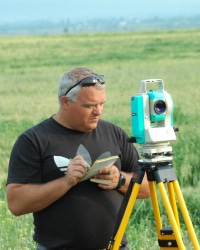 Stephen Batiuk is a Senior Research Associate and Lecturer with the Department of Near & Middle Eastern Civilizations, University of Toronto, and co-director of GRAPE – the Gadachrili Gora Regional Archaeological Project Expedition (Republic of Georgia) as well as Director of Excavations for the Tayinat Archaeological Project (Turkey) and the Project Manager for the Computational Research on the Ancient Near East (CRANE) Project. He holds his degrees from the University of Toronto (Ph.D.) and the University of Ottawa, and his areas of specialization include Near Eastern archaeology with a focus in the Bronze and Irons Ages of Turkey, Syria and the Caucasus.
Stephen Batiuk is a Senior Research Associate and Lecturer with the Department of Near & Middle Eastern Civilizations, University of Toronto, and co-director of GRAPE – the Gadachrili Gora Regional Archaeological Project Expedition (Republic of Georgia) as well as Director of Excavations for the Tayinat Archaeological Project (Turkey) and the Project Manager for the Computational Research on the Ancient Near East (CRANE) Project. He holds his degrees from the University of Toronto (Ph.D.) and the University of Ottawa, and his areas of specialization include Near Eastern archaeology with a focus in the Bronze and Irons Ages of Turkey, Syria and the Caucasus.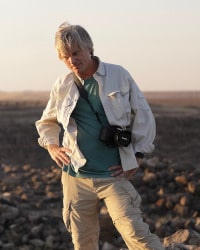 Kent V. Bramlett is a Professor of Archaeology and the History of Antiquity at La Sierra University where he has taught since 2010. He is Chair of the Department of Biblical Studies and Archaeology and Director of Graduate Studies in Archaeology. He is Curator of the Archaeology Collections and Associate Director of the Center for Near Eastern Archaeology at La Sierra University. He earned a Ph.D. in Near Eastern Archaeology at the University of Toronto, specializing in the Late Bronze Age. He is co-director of the Madaba Plains Project excavation at Tall al-‘Umayri and the Balu‘a Regional Archaeological Project, both in Jordan. At La Sierra, he teaches Akkadian, Hieroglyphic Egyptian, and other ancient languages in addition to archaeology classes.
Kent V. Bramlett is a Professor of Archaeology and the History of Antiquity at La Sierra University where he has taught since 2010. He is Chair of the Department of Biblical Studies and Archaeology and Director of Graduate Studies in Archaeology. He is Curator of the Archaeology Collections and Associate Director of the Center for Near Eastern Archaeology at La Sierra University. He earned a Ph.D. in Near Eastern Archaeology at the University of Toronto, specializing in the Late Bronze Age. He is co-director of the Madaba Plains Project excavation at Tall al-‘Umayri and the Balu‘a Regional Archaeological Project, both in Jordan. At La Sierra, he teaches Akkadian, Hieroglyphic Egyptian, and other ancient languages in addition to archaeology classes.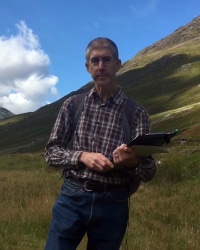 Michael Given is a Senior Lecturer in Archaeology in the School of Humanities, University of Glasgow, Scotland. His research interests include archaeological survey and landscape archaeology, the historical periods in the Eastern Mediterranean, post-Medieval Scotland, the relationship between people and the environment, and conviviality theory. He has carried out fieldwork in Cyprus, Egypt, Greece, Scotland and Turkey. From 2000 to 2012 he was co-director of the Troodos Archaeological and Environmental Survey Project, Cyprus, and he is currently director of the publication phase of the Excavations at Kourion’s Amathous Gate Cemetery, Cyprus. His books include The Archaeology of the Colonized (Routledge, 2004), and Landscape and Interaction: The Troodos Archaeological and Environmental Survey Project, Cyprus (with A.B. Knapp, L. Sollars, J. Noller and V. Kassianidou; 2 volumes; Council for British Research in the Levant, 2013).
Michael Given is a Senior Lecturer in Archaeology in the School of Humanities, University of Glasgow, Scotland. His research interests include archaeological survey and landscape archaeology, the historical periods in the Eastern Mediterranean, post-Medieval Scotland, the relationship between people and the environment, and conviviality theory. He has carried out fieldwork in Cyprus, Egypt, Greece, Scotland and Turkey. From 2000 to 2012 he was co-director of the Troodos Archaeological and Environmental Survey Project, Cyprus, and he is currently director of the publication phase of the Excavations at Kourion’s Amathous Gate Cemetery, Cyprus. His books include The Archaeology of the Colonized (Routledge, 2004), and Landscape and Interaction: The Troodos Archaeological and Environmental Survey Project, Cyprus (with A.B. Knapp, L. Sollars, J. Noller and V. Kassianidou; 2 volumes; Council for British Research in the Levant, 2013).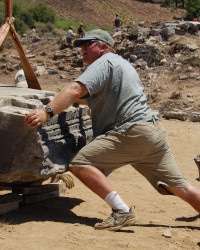 Michael Hoff specializes in Greek and Roman archaeology, particularly of Asia Minor in Turkey where he currently conducts research. From 1997 to 2004, Hoff co-directed the architectural survey team of the Rough Cilicia Archaeological Survey Project that documented ancient Roman sites in Turkey. Since 2005, Hoff has served as Project Director for the large-scale excavations of the ancient Roman-era city of Antiochia ad Cragum on the south coast of Turkey. Hoff has excavated previously at the Athenian Agora, Corinth, Crete, and at the Sanctuary of Zeus at Nemea, Greece. In addition to his work on the archaeology of Asia Minor, Hoff also conducts research on the history and topography of Roman Athens. Hoff has authored many articles in international journals and has co-edited several books, including Rough Cilicia: New Historical and Archaeological Approaches (Oxbow Press). Professor Hoff received his B.A. from the University of Missouri, M.A. from Florida State University, and Ph.D. from Boston University. Hoff joined the art history faculty at the University of Nebraska in 1989.
Michael Hoff specializes in Greek and Roman archaeology, particularly of Asia Minor in Turkey where he currently conducts research. From 1997 to 2004, Hoff co-directed the architectural survey team of the Rough Cilicia Archaeological Survey Project that documented ancient Roman sites in Turkey. Since 2005, Hoff has served as Project Director for the large-scale excavations of the ancient Roman-era city of Antiochia ad Cragum on the south coast of Turkey. Hoff has excavated previously at the Athenian Agora, Corinth, Crete, and at the Sanctuary of Zeus at Nemea, Greece. In addition to his work on the archaeology of Asia Minor, Hoff also conducts research on the history and topography of Roman Athens. Hoff has authored many articles in international journals and has co-edited several books, including Rough Cilicia: New Historical and Archaeological Approaches (Oxbow Press). Professor Hoff received his B.A. from the University of Missouri, M.A. from Florida State University, and Ph.D. from Boston University. Hoff joined the art history faculty at the University of Nebraska in 1989.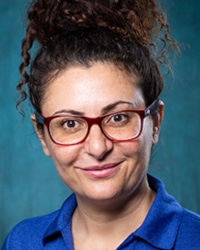 Xenia-Paula Kyriakou is a Lecturer in Legal Studies in the Department of Justice Studies at Gulf Coast University, in Florida. Her research interests include the reconstruction of health and demography in ancient societies, paleoepidemiology, paleo-oncology, the development of standards and methods in forensic anthropology, humanitarian forensics, and necropolitics. She was involved in numerous archaeological excavations as a bioarchaeologist and worked on many forensic cases, including those that address violation of human rights, both in Cyprus and abroad. She is the director of Odyssey Field School, which has been running since 2014 to present day, and offers training and research opportunities to students in the disciplines of bioarchaeology and forensic anthropology.
Xenia-Paula Kyriakou is a Lecturer in Legal Studies in the Department of Justice Studies at Gulf Coast University, in Florida. Her research interests include the reconstruction of health and demography in ancient societies, paleoepidemiology, paleo-oncology, the development of standards and methods in forensic anthropology, humanitarian forensics, and necropolitics. She was involved in numerous archaeological excavations as a bioarchaeologist and worked on many forensic cases, including those that address violation of human rights, both in Cyprus and abroad. She is the director of Odyssey Field School, which has been running since 2014 to present day, and offers training and research opportunities to students in the disciplines of bioarchaeology and forensic anthropology.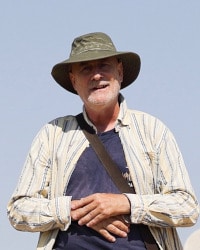 Friedbert Ninow (Ph.D. 2000, Andrews University) is the Dean of the Richards Divinity School, La Sierra University, and co-director of the Balu’a Regional Archaeological Project. He also directed the Wadi ash-Shkafiya Archaeological Survey as well as excavations at Khirbat al-Ma’mariyah.
Friedbert Ninow (Ph.D. 2000, Andrews University) is the Dean of the Richards Divinity School, La Sierra University, and co-director of the Balu’a Regional Archaeological Project. He also directed the Wadi ash-Shkafiya Archaeological Survey as well as excavations at Khirbat al-Ma’mariyah.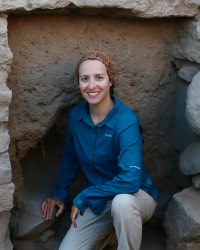 Monique D. Roddy is an Assistant Professor in the Department of History and Philosophy at Walla Walla University. She earned her Ph.D. from the University of Chicago with a dissertation on household archaeology in the Early Iron Age in the southern Levant. She worked with the Madaba Plains Project at Tall al-‘Umayri in Jordan from 2004 to 2016 and continues to work as an editor on the final publication series for ‘Umayri. She has co-directed the Balu’a Regional Archaeological Project at Khirbat al-Balu’a since 2017. She has also excavated at Zincirli in southeastern Turkey, Keros in the Cycladic Islands, and Cartagena in southern Spain.
Monique D. Roddy is an Assistant Professor in the Department of History and Philosophy at Walla Walla University. She earned her Ph.D. from the University of Chicago with a dissertation on household archaeology in the Early Iron Age in the southern Levant. She worked with the Madaba Plains Project at Tall al-‘Umayri in Jordan from 2004 to 2016 and continues to work as an editor on the final publication series for ‘Umayri. She has co-directed the Balu’a Regional Archaeological Project at Khirbat al-Balu’a since 2017. She has also excavated at Zincirli in southeastern Turkey, Keros in the Cycladic Islands, and Cartagena in southern Spain.